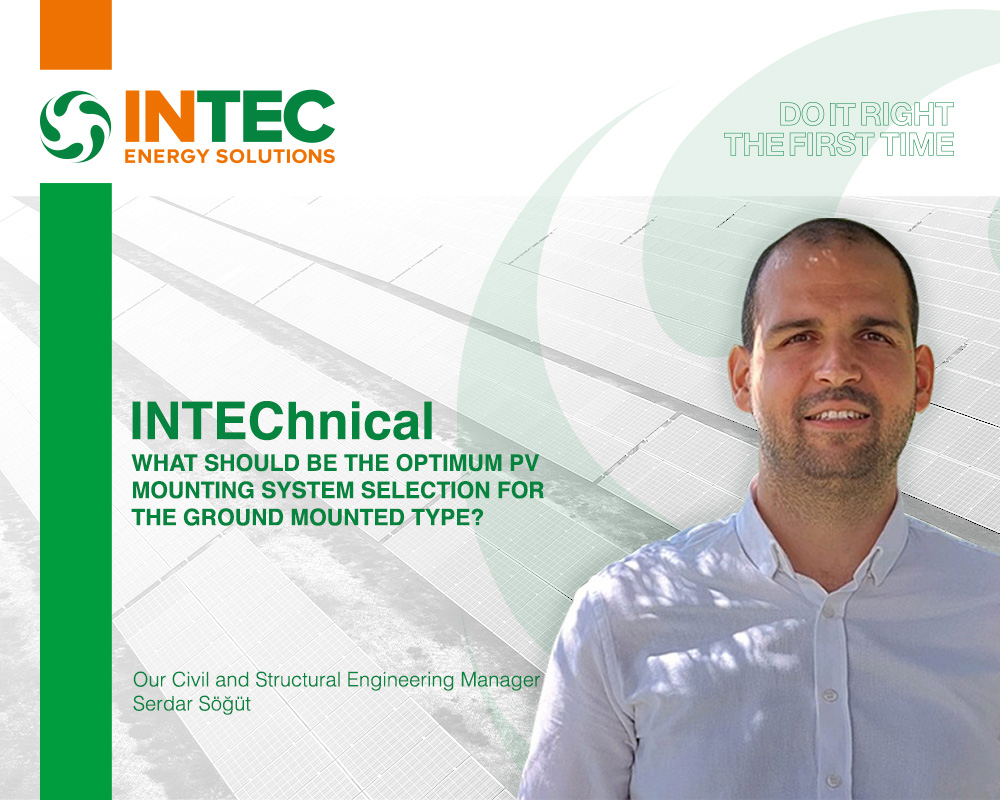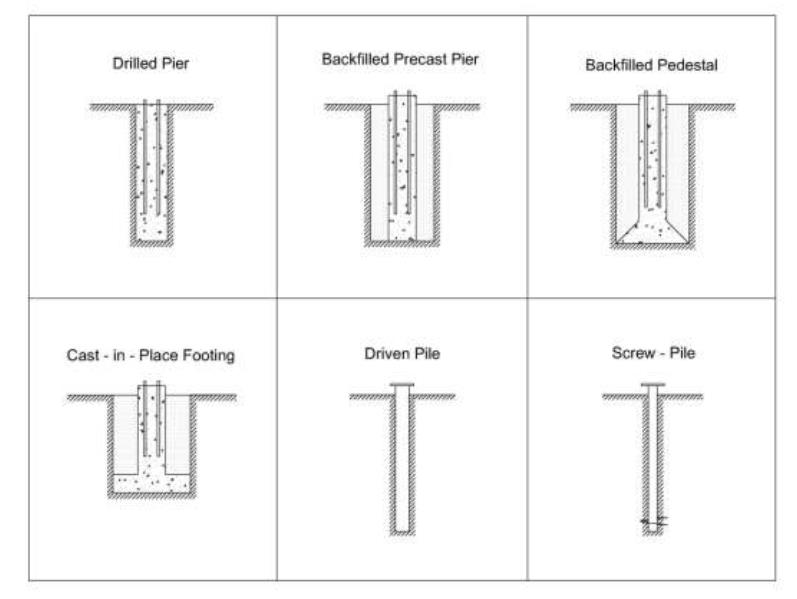
Optimal PV Mounting System Selection for Ground Mounted Type
During the last decades solar photovoltaic (PV) systems have been implemented in various types and scales in many locations, thanks to being a renewable, clean and sustainable source of energy. Presently PV utilities experiences highest demand in last years with common sense of humanity considering it a good alternative of energy generation for a clean future. This article focuses on optimal PV mounting system selection for ground-mounted type, which is one of the most commonly used types of PV systems. As its name implies, modules are supported by metallic structure anchored to ground. Mounting systems are crucial for the proper operation of PV plants during expected design life. In order to harvest maximum solar radiation, solar modules are mounted on a support structure at the optimum tilt angle.
While deciding to have an optimal PV mounting system for a specific location, many technical aspects should be considered; and two most important aspects would be as follows:
Location of Utility ( loads and environmental factors acting on structure )
The geographic location of utility is highly important in order to estimate loads acting on the mounting structure, namely, wind, snow, hail, rain, seismic and temperature. Depending on project location, any of these loads may be critical for the stability and endurance of the system. While in some places where wind force may be dominant load case due to severe storms or cyclonic hurricanes, in another place with high altitude, high snow accumulation on PV modules could be critical. Similarly, in some locations where temperature variation is at extreme level between day and night or summer and winter seasons, stresses on structural elements due to temperature effect should be considered especially if there is no release on that degree of freedom considered during design phase for extra stresses and displacements due to elongation or contraction.
Moreover, it would be good to open an extra parenthesis for rain which is normally not considered as a critical load for ground-mounted systems or not taken at all due to the help of tilt of PV table prevents any water accumulation on PV modules; however in some cases where long seasonal rainfall occurs nearby project locations, structural elements would be prone to permanent water flow above its surface due to improper design of racking system which in other words causes direct exposure of supporting structure to rain flow path. This phenomenon basically leads to corrosion of protective coating on racking system; thus, occurrence and propagation of rust on support elements would deteriorate stability or rigidity of the system.
Besides the above, project location gives an idea about security, site topology and environmental factors that also play a key role on the overall performance of the PV plants. For areas with a considerable risk of vandalism, additional measures like anti-vandal fastener sets could be preferred for the mounting system. Regarding the topology of the site, in case uneven terrain slopes with high variation of site elevation exist, orography factor for wind actions shall be taken into account. In addition, having environmental factors like sand storms, dirt, mud, bad air quality etc. may have a significant impact on the operation and maintenance cost of PV modules and mounting systems; thus, the clean and stable environment should be selected if possible.
Ground (soil) Conditions
Selecting the most appropriate foundation is critical for long-term structural performance of any PV plant. To do so, detailed site study surveys shall be carried out. The most important of them are listed as below:
- Geotechnical study
- Geophysical study
- Hydrological study
- Drainage study
- Soil corrosivity study
- Direct driving
- Cast-in place or precast concrete ballast
- Cast-in place concrete micro pile with pre-drilling
- Backfilled precast concrete micro pile with pre-drilling
- Helical (screw) piles

Figure: Foundation types for ground-mounted PV plants (cited from Alan J. Lutenegger, University of Massachusetts Amherst, Foundation Alternatives for Ground Mount Solar Panel Installations, https://www.researchgate.net/publication/312600024)
From a cost perspective, direct driving into the soil is preferred mostly if the soil has good cohesiveness, composed of clay, small gravel, or dense sand with no obstacles underground. It has advantages of low installation time, high accuracy, and low cost due to the use of zero concrete. Nowadays, ramming machines are widely used and easily accessible equipment for PV projects.
Helical piles are mostly preferred for loose, uncompacted soil conditions with a high water table where direct driving is not appropriate or requires very deep foundation depth. On the contrary, concrete ballast or micro pile with pre-drilling options would be considered when soil is impenetrable due to stone or rock layers.
For any selected foundation type, a static pile loading test ( Pull out test) shall be performed on the real project site as per related norms to validate foundation design and ensure that ground load-bearing and serviceability criteria are satisfied.
In addition to the above, a drainage study is crucial to assess soil permeability capacity and surface water infiltration through different soil layers in case any design storm hits the plant. The negative impact of terrain slope shall also be investigated to prevent weakening of foundation due to excessive surface runoff leading to soil erosion. Some measures like implementing underground drain pipes or open channels inside and/or around the project site’s perimeter may be considered as a solution.
Last but not least, soil chemical analysis shall be done for every specific project in order to assess soil aggressivity against concrete and steel materials as per related standards. In case of any risky corrosivity level observed from laboratory test results, necessary protection measures shall be taken to protect embedded parts of the racking system from the corrosion effect. Possible solutions could be as below:
- Higher thickness of coating layer than average value proposed by Norm for metallic pile foundation
- Higher wall thickness of metallic pile foundation than what is required by structural design and calculations
- Use of stainless steel or anodized aluminum, which are more resistant to corrosion for metallic pile foundations
- Cathodic protection
- Use of special cement for concrete foundation depending on which parameter causes high soil aggressivity
Copyright © 2023 Wszelkie prawa zastrzeżone
